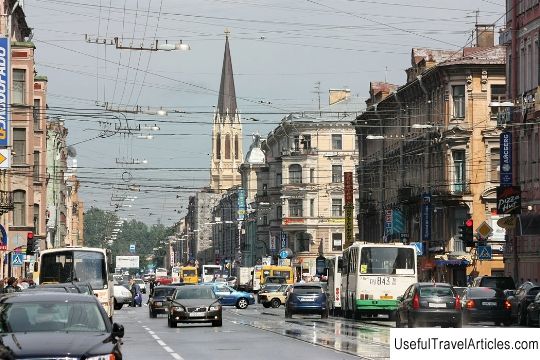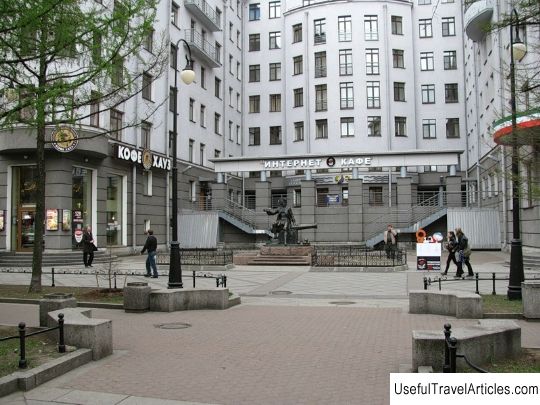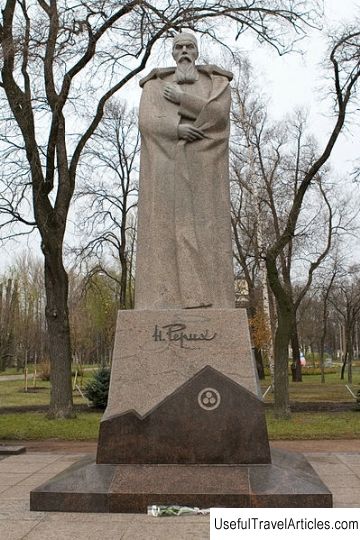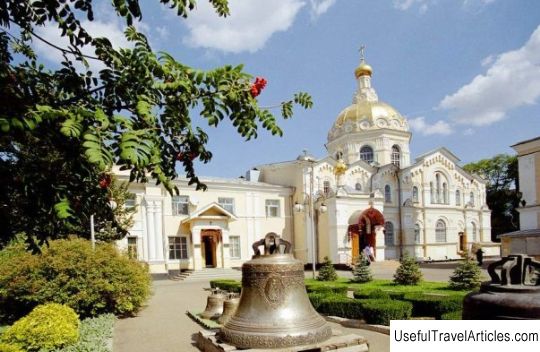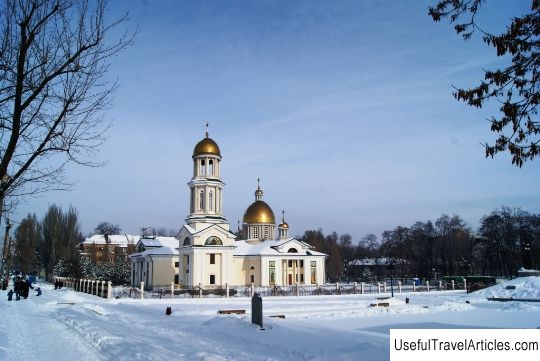St. Andrew's Cathedral description and photos - Russia - St. Petersburg: St. Petersburg
Rating: 8,0/10 (343 votes) 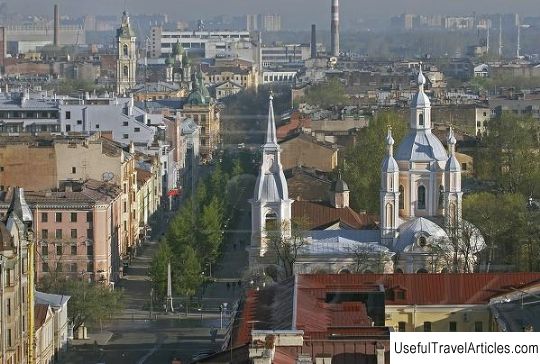
St. Andrew's Cathedral description and photos - Russia - St. Petersburg: St. Petersburg. Detailed information about the attraction. Description, photos and a map showing the nearest significant objects. Photo and descriptionSt. Andrew's Cathedral is one of the most ancient and revered churches in St. Petersburg. Located on Vasilievsky Island. An architectural monument of the 18th century. In the second decade of the 18th century, the administrative and business center of the city was moved from Zayachiy Island to Vasilievsky Island. Peter I wanted a church dedicated to St. Andrew the First-Called to be erected here in front of the Twelve Collegia building. But it was built after the death of the emperor. In 1728, on Vasilievsky Island, at the intersection of Bolshoy Prospekt and Line 6, a piece of land was allocated, where a wooden church was erected. Presumably, the author of the project was D.A. Trezzini. In 1732, the church was consecrated in the name of the Holy Apostle Andrew the First-Called. The iconostasis from the dilapidated wooden church of the Nativity of the Most Holy Theotokos, located in Posad Sloboda, on the Petersburg island, was moved here. Empress Anna Ioannovna donated funds for utensils and vestments. The temple was intended for the celebration and celebration of the knights of the St.Andrew's Order. In 1744 it received the status of a cathedral. The royal family came to the solemn church services, as well as many famous personalities of that time, including M. Lomonosov and V. Trediakovsky. The wooden building of the temple was cold and cramped, with 1 aisle and was not distinguished by its beauty. Therefore, in 1740-1745, the construction of a new church, designed by Trezzini, began. The consecration ceremony in honor of the Three Ecumenical Hierarchs took place in 1760. Iconostasis, the throne and other utensils were transferred from the former house church of Prince Menshikov. During a thunderstorm in July 1761, the wooden St. Andrew's Church burned down, and in the summer of 1764 a new church was laid, which was built under the leadership of A. Vista. It has survived to this day. Construction was completed only by 1780. The new temple was the center of the knights of the Order of the Holy Apostle Andrew the First-Called. In 1786 the bell tower was erected, and 4 years later - the chapel. In 1797, a bas-relief was installed above the entrance with the image of the Order of St. Andrew the First-Called, which is in the hands of two angels. In the second half of the 19th century, a parish charitable society operated at the cathedral, which contained a shelter for children and terminally ill people, cheap housing for women. After 1917, the temple was plundered and closed. It was used as a warehouse. The chapel on the Nikolaevsky (Blagoveshchensky) bridge, due to the installation of a monument to Lieutenant P.P. Schmidt, destroyed. In 1928, the bells were removed from the bell tower, later they were melted down. During the war years of the Great Patriotic War, the roof, facades, iconostasis, interior of the church suffered. In 1992 the cathedral was restored and returned to the parishioners. Services are held daily. The graceful cathedral building is painted in pale pink. The high dome of the temple and the slender bell tower are admirable. The cathedral is crowned with one large and four small domes. The architectural style can be described as transitional from Baroque to Classicism. The best decoration of the cathedral is the three-tiered carved gilded iconostasis. Its height is 17 meters. Among other values, one can note a silver altar vestment weighing 115 kg in the main altar, the Gospel in a silver setting, the Exaltation icon, the altarpiece of the Lord of hosts. There is a legend that Ekaterina Alekseevna Dolgorukaya (“the failed empress” was buried near the church) ), who was the bride of the young emperor Peter II, who died of smallpox on the eve of the wedding.           Topic: St. Andrew's Cathedral description and photos - Russia - St. Petersburg: St. Petersburg. |
